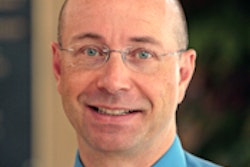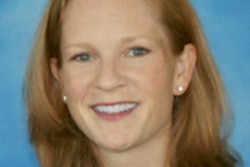
Screening mammography recall rates are often higher in the hospital setting, but this doesn't necessarily mean that hospital radiologists are performing worse than their counterparts in community practice, according to a new study published online in Radiology.
Recall rate is a common measure of performance in screening mammography. If recall rates are too low, it could mean that a site has lower sensitivity and is experiencing false negatives, whereas recall rates that are too high suggest more false positives. But is recall rate a good measure of a site's effectiveness?
Not necessarily, according to researchers from Rhode Island Hospital in Providence, who discussed their efforts to measure recall rates (Radiology, July 24, 2013).
"Our data call into question the utility of a universal recall rate goal and suggest that targets may have to be adjusted on the basis of local patient population factors," wrote lead author Dr. Jason Rothschild and colleagues.
Confounding circumstances
Although recall rate is often used to assess a radiologist's performance, it can be confounded by circumstances beyond the physician's control, such as the following:
- Patient population (age, breast density, use of hormone replacement therapy, family history)
- Radiologist factors (sex, fellowship training in mammography, years of work experience)
- Systemic factors (yearly mammogram reading volume at a given site, batch reading, double versus single reading, computer-aided reading)
Rothschild's team reviewed data between May 2008 and September 2011 for five radiologists with expertise in breast imaging who interpreted mammograms at a community office practice and an academic referral hospital. Both sites used full-field digital mammography and batch screening interpretation.
The group interpreted a total of 74,297 screening mammograms among both sites during the study. The total number of patients recalled was 5,799, for an overall recall rate of 7.8%.
There was a significant difference between overall recall rates at the community site and the hospital: 6.9% and 8.6%, respectively. The overall recall rate between the two sites fell within the range reported for the U.S. (5% to 20%); the overall rate for each practice site was less than 10%, as recommended; and each individual radiologist's rate met recommended goals at the community site. Some of the five participating radiologists had higher than recommended recall rates at the hospital site, however.
"Our study data showed that the overall recall rate was higher in the hospital setting, and that was true for each of the participating radiologists," co-author Dr. Ana Lourenco told AuntMinnie.com. "We wanted to delve deeper and figure out why that might be."
 Dr. Ana Lourenco from Rhode Island Hospital.
Dr. Ana Lourenco from Rhode Island Hospital.
When Rothschild and colleagues compared the two groups of patients, they found some key differences that could have influenced recall rates. Significantly more of the hospital patients had undergone previous surgeries and biopsies: About 13% of the patients at the hospital site had a history of surgery, compared with 5.6% at the community site, and 7% of patients at the hospital had undergone a biopsy, compared with 1.4% at the community site. In these patients, mammograms may have been more complicated to interpret, or the patients may have been at higher risk than those at the community site, according to the authors.
"Higher-risk patients would be expected to increase the recall rate of the population," they wrote. "In addition, the mean patient age at the hospital site was significantly lower than at the community site. This factor probably contributed to higher recall rates at the hospital site, as younger age has been associated with higher recall rates."
The study had a few limitations, including a lack of data on race and family or personal history of breast cancer. In addition, the five participating radiologists were all fellowship-trained in breast imaging, while the majority of mammograms are interpreted by general radiologists, according to the researchers. Also, Rothschild's team did not have data on the cancer detection rate of both facilities, so it did not evaluate the relationship between detection rate and recall rate.
"It is possible that a higher recall rate is necessary in some populations to maintain an appropriate cancer detection rate," the authors wrote.
But the study findings do suggest factors beyond radiologists' control that affect recall rate data -- and this should be taken into consideration, Lourenco said.
"Higher recall rates in the hospital aren't necessarily an accurate measure of the quality of radiologists' work in the hospital," she said. "Recall rate is an easy thing to measure, but it can be misleading if you think it's the end all, be all."




















